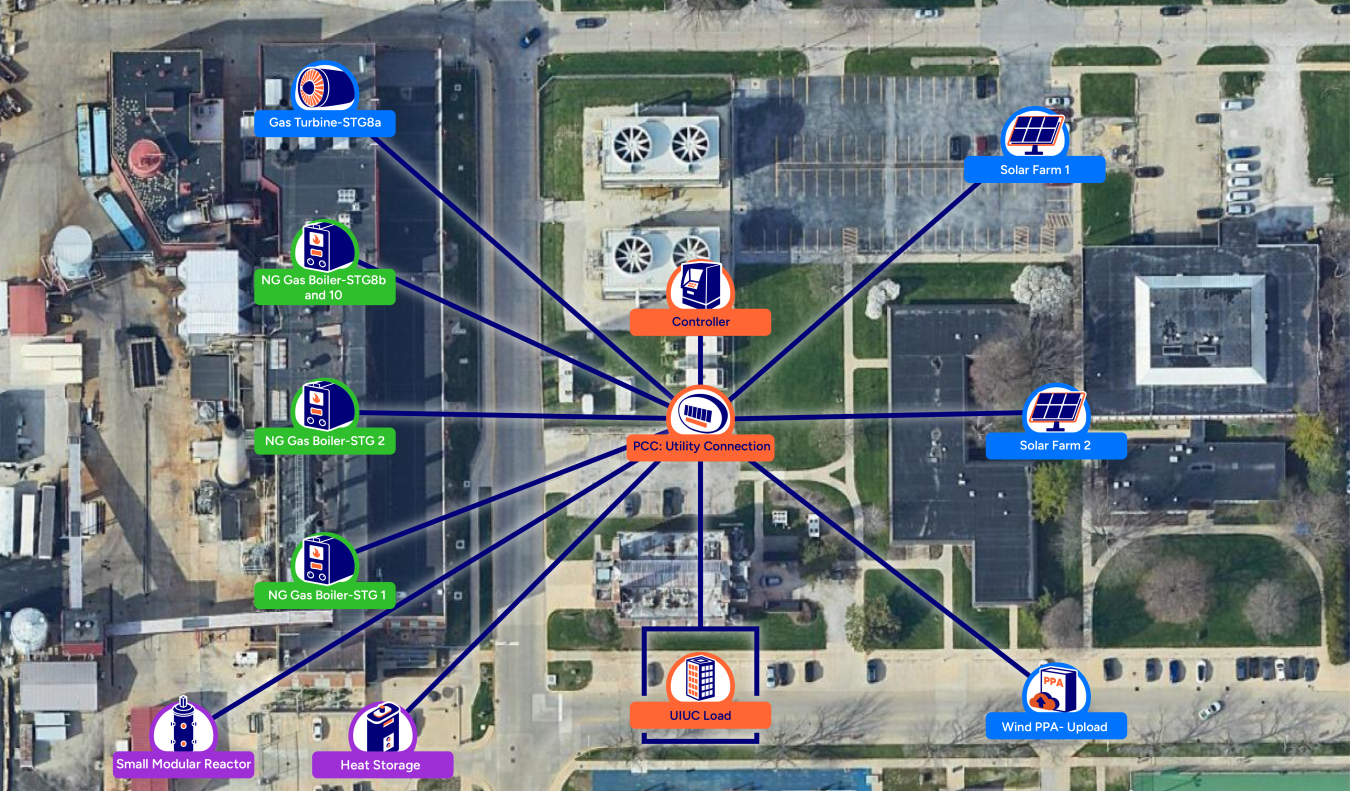Like many university campuses around the country, the University of Illinois, Urbana-Champaign (UIUC) campus uses a microgrid to provide power to its facilities.
January 13, 2025Like many university campuses around the country, the University of Illinois, Urbana-Champaign (UIUC) campus uses a microgrid to provide power to its facilities. Microgrids are electric grids that are self-sufficient and can operate independently of larger utility grids. They are especially suited for campuses because they can be used to provide backup power when there is a failure in the main utility grid and can also island, or isolate, buildings that are having problems so that the power failure does not affect the other buildings on campus.
The Office of Electricity’s (OE’s) Microgrid Program recently concluded a scoping study of the campus microgrid at UIUC with a focus on integrating a Small Modular Reactor (SMR) into the generation mix. SMRs are advanced nuclear reactors that have a power capacity of up to 300 MW(e) per unit (about one-third the size of traditional nuclear power reactors). The nuclear power industry is rapidly innovating to meet the energy demands of a decarbonizing world. Advanced technologies, such as SMRs, can be deployed as electricity producers on the grid or in tightly integrated energy systems, such as campus microgrids, to provide reliable, dispatchable carbon-free power.
The goals of the scoping study were twofold: (1) to gain an understanding of achieving a net-zero carbon microgrid to power and heat the entire campus and (2) to explore the contribution of SMR technology to the grid as a distributed energy resource.
With the Microgrid Program’s support, the Department of Nuclear, Plasma & Radiological Engineering (NPRE) at UIUC conducted the scoping study in collaboration with the Xendee Corporation. Xendee provided the microgrid design and operation optimization software with enhanced SMR modeling capabilities that were co-developed with the Idaho National Laboratory (INL).
The study modeled and analyzed the entire UIUC campus microgrid. All facilities were modeled: hundreds of buildings, laboratories, dormitories, computing centers, chilled water, and other infrastructure. The generation portfolio included coal, natural gas, fuel oil, solar and wind. UIUC’s energy system is centered around a Combined Heat and Power (CHP) facility, which provides both electricity and steam for the campus. Remaining electricity demand is met through connections with the local utility.

Dr. Timothy Grunloh, a member of the UIUC research team, said, “We are appreciative of the DOE Microgrid Program support to help us research and develop avenues for integrating advanced nuclear technologies into carbon-free microgrids. This study represents a crucial step towards achieving our vision for a resilient, sustainable energy future and paving the way for efficient and effective deployment of SMR technologies.”
This study produced and demonstrated a first-of-its-kind ability to model wide-ranging scenarios for the integration of carbon-free SMR generation with renewable generation and storage and power exchange with the local utility. One scenario showed that integration of a small-sized reactor led to a 60% carbon reduction, while another scenario showed that, with cogeneration, fully replacing the district heating production with nuclear led to 85% carbon reduction.
The scoping study has implications beyond the confines of a university campus microgrid. If SMR integration works on a campus, it can work on an industrial park, port, military base, or research complex. Potential applications range from fossil-to-nuclear transitions in microgrids to supporting communities with higher renewable penetration and stable base generation provided by SMRs.
To read the scoping study report, click here.

